Tirol |
|
|
|
| Übersicht – Contents: | |
|
|
Tirol |
|
|
|
| Übersicht – Contents: | |
|
|
Flaggen – Flags: |
|
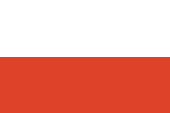 |
Landesflagge (Landesfarben) – Flag of the country (colours), Seitenverhältnis – ratio = 2:3, Quelle/Source: Wikipedia (D), Färbung/colour nach/by Dr. Peter Diem www.peter-diem.at |
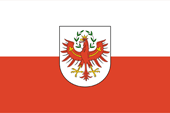 |
Dienstflagge – official flag, Seitenverhältnis – ratio = 2:3, Quelle/Source: Wikipedia (D), Färbung/colour nach/by Dr. Peter Diem www.peter-diem.at |
|
|
|
| historische Flagge – historical Flag: | |
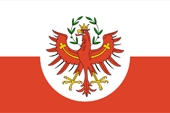 |
1946–1949, Landesflagge – flag of the country, Seitenverhältnis – ratio = 2:3, Quelle/Source: Flaggen Enzyklopädie |
|
|
|
| andere Flaggen – other Flags: | |
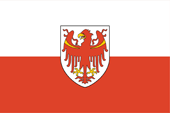 |
Offizielle Flagge von Südtirol (Alto-Adige) – Official flag of South Tyrol (Alto-Adige), Seitenverhältnis – ratio = 2:3, Quelle/Source nach/by: F l a n k e r / CC BY via: Wikipedia (D) |
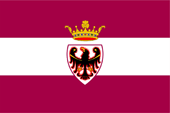 |
Offizielle Flagge von Welschtirol (Trentino) – Official flag of the Trento Province, Seitenverhältnis – ratio = 2:3, Quelle/Source nach/by: User:Fulvio314 / Public domain, via: Wikipedia (D) |
|
|
|
Bedeutung/Ursprung der Flagge – Meaning/Origin of the Flag: |
|
| Die
Flagge von Tirol stammt aus dem frühen 19. Jahrhundert und zeigt zwei
Streifen in Weiß und Rot. Sie wurde am 10.03.1949 eingeführt. Die Farben der Flagge leiten sich aus den Farben des Wappens ab (roter Adler auf Silber). |
The flag of Tyrol descents from the early 19. century and shows two stripes in white and red. It was introduced on 10th of March in 1949. The colours of the flag are derived from the colours of the coat of arms (red eagle on silvery ground). |
| In der Zeit der Monarchie hatte das Land, wie alle Kronländer der österreichischen Krone, seine eigenen, sogenannten Landesfarben, die unter anderem auf horizontal getreiften zwei- oder dreistreifigen Flaggen gezeigt wurden. Die Landesfarben waren sehr oft dem jeweiligen Wappen des Kronlandes entnommen oder wurden duch eine weitere, nicht im Wappen enthaltene Farbe ergänzt, oder sie gingen auf ältere Modelle des Landeswappens zurück (z.B. Krain). Offiziell waren die Landesfarben aber nie geregelt oder festgelegt worden, so dass deren Reihenfolge in der Praxis of variierte oder die Farben gar an sich abwichen. Der österreichische Heraldiker Hugo Gerard Ströhl (1851–1919) hat sich wohl als erster des Themas angenommen und wahrscheinlich um das Jahr 1890 herum die Landesfarben auf den Flaggen bei den jeweiligen Landesbehörden abgefragt und zusammengestellt. Für Tirol wurden Weiß und Rot als Landesfarben für das Kronland ermittelt. |
In the time of the
monarchy, the country had – like all the other crown lands of the Austrian
crown – its own colours (Landesfarben), which were used amongst others on
horizontally two- or three-striped flags. The colours (Landesfarben) were very often taken from the respective coat of arms of the country or were supplemented by another colour, which not appears in the coat of arms, or they went back to older models of the coat of arms (e.g. Carniola). Officially, the colours had never been regulated or stipulated, so that their sequence varied in practice or even the colors deviated. The Austrian heraldist Hugo Gerard Ströhl (1851–1919) was probably the first to take care of it and asked for the colors (Landesfarben) on the flags at the respective state authorities around 1890 and compiled them. For Tyrol, white and red were ascertained as the country's colors of the crown land. |
| Österreich trat 1938 als ein Land dem Deutschen Reich bei. Die föderalen Strukturen spielten keine Rolle, sie wurden komplett durch die Gaue der NSDAP abgelöst, die Länder wurden abgeschafft. Ämter und Behörden hatten ab jetzt die Dienstflagge des Reiches zu verwenden. Die entsprechenden Landesfarben existierten möglicherweise weiter, auf jeden Fall aber nicht in Form von Flaggen. Sie wurden möglicherweise vereinzelt an Uniformen der SA oder bei bestimmten Dienstgraden der Hitlerjugend in der Brustschnur verwendet. |
Austria joined the German
Empire in 1938 as one country. The federal structures played no role, they
were completely replaced by the NSDAP districts (NS-Gau), the countries were
abolished. From now on, offices and authorities had to use the empire's
official flag. The corresponding national colors may still have exist, but not in the form of flags. They may have been used sporadically on SA uniforms or in some ranks of the Hitler Youth in the chest cord. |
| Die Flaggen der Österreichischen Bundesländer werden mit oder ohne Wappen gezeigt. Amtlich verwendet, tragen sie immer das Wappen, jedoch darf auch die Bevölkerung Flaggen mit Wappen verwenden. | The flags
of the Federal States of Austria are used with or without the coat of arms. For official use, however, they always show it. The general population is permitted to use this format as well. |
| Die Flagge Tirols, die 1946 eingeführt und 1949 durch das heutige Modell ersetzt wurde zeigt den Adler stark vergrößert in der Mitte der weiß-roten Flagge auf einer weißen Scheibe. Sie erfreut sich noch immer einiger Beliebtheit, kommt aber nach und nach aus der Mode, die Flagge mit dem Wappen ist deutlich mehr verbreitet. | The flag of Tyrol, which was introduced in the year 1946 and which was replaced by the today's model in the year 1949, shows the eagle enlarged in the middle of the white-red flag on a white disc. It still enjoys some popularity, but is gradually going out of fashion, the flag with the coat of arms is much more common. |
| Für die Farben der Flaggen der österreichischen Bundesländer scheint es keine gesetzlichen Regelungen zu geben, sie werden, da offenbar nicht definiert, in der Praxis in einem gewissen Standardbereich wiedergegeben. Der österreichische Publizist und Medienwissenschaftler Dr. Peter Diem gibt aber Empfehlungen für die Wiedergabe der Farben: Für Tirol ein helles Rot, am ehesten Pantone 179 entsprechend. |
There do not seem to be any legal regulations for the colours of the flags
of the Austrian federal states; since they are apparently not defined, they
are reproduced in practice within a usual standard range. However, the Austrian publicist and media scientist Dr. Peter Diem gives recommendations for the reproduction of the colours: For Tyrol, a bright red, most likely corresponding to Pantone 179. |
| Quelle/Source: Dr. Peter Diem austria-forum.org, Wikipedia (D), Flaggen Enzyklopädie, Flags of the World, Volker Preuß, Österreichisch-Ungarische Wappenrolle | |
Wappen – Coat of Arms: |
|
 |
seit/since 1946, Wappen Land Tirol – coat of arms of the State of Tyrol, Quelle/Source nach/by: Landeswappen (PDF) / Public domain Wikipedia (D), Färbung/colour nach/by Dr. Peter Diem www.peter-diem.at |
andere Wappen – other coats of arms: |
|
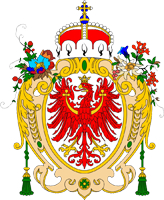 |
ca.1890–1918, Wappen Gefürstete Grafschaft Tirol – coat of arms of the Princely County of Tyrol, Quelle/Source nach/by: Ströhl, Wappenrolle Österreich-Ungarns, 1890, via Wikipedia (D) |
 |
seit/since 1983, Wappen Provinz Südtirol in Italien – coat of arms of the Province of South Tyrol in Italy, Quelle/Source: Helga von Aufschnaiter, nach/by: F l a n k e r / Public domain via: Wikipedia (D) |
 |
seit/since 1988, Wappen Provinz Welschtirol (Trentino) in Italien – coat of arms of the Trento Province in Italy, Quelle/Source nach/by: King John of Bohemia (vectorized by Gothika)This W3C-unspecified vector image was created with Adobe Illustrator. / Public domain via: Wikipedia (D) |
Bedeutung/Ursprung des Wappens – Meaning/Origin of the Coat of Arms: |
|
| "Das
Tiroler Wappen zeigt in silbernem Schild einen roten, golden bekrönten nach
heraldisch rechts blickenden Adler mit goldenen Waffen, mit goldenen
Flügelspangen mit Kleeblattenden und einem nach oben offenen grünen Kranz
hinter seinem Haupt." Zitat von Dr. Peter Diem auf: Flags of the World |
"The
Tyrolean coat of arms shows a red eagle on a silver shield with a golden
crown. The eagle looks to the heraldic right and is armed with golden claws
and legs, golden bars in the wings ending in a shamrock and a green wreath,
open on the top, behind its head." Quote of Dr. Peter Diem on: Flags of the World |
|
"Das alte
Tiroler Landeswappen „roter Adler auf silbernem (weißem) Grund“ ist in
Abbildungen seit 1271/1286 farbig überliefert. Als älteste Darstellung gilt
das Fresko in der Kapelle von Schloss Tirol aus der Zeit von 1271 bis 1286.
Eine Beschreibung mit Angabe der Farben ist im Wappengedicht (Clipeus
Teutonicorum) des Domherren Konrad on Mure, das um 1250 entstanden ist,
enthalten: „Fert aquilam Tyrolis clipeus prestante rubore, que nigri pedis
est alias albente colore“ (Das weiße Schild Tirols führt einen Adler von
hervorstechender roter Farbe und schwarzen Füßen). Zum Unterschied dazu war
es seit dem 14. Jahrhundert üblich, die Fänge und die Waffen des Adlers
golden zu färben. Im Jahre 1416 erhielt der Adler eine Krone, und im 1567
einen grünen Kranz um seinen Kopf." Zitat von: Mirko Costa, Bruneck, Südtirol |
"The
ancient coat of arms of Tyrol „red eagle on silvery (white) ground“ is
handed down in colored depictions since 1271 resp. 1286. As the oldest
reproduction counts the fresco in the chapel of Tyrol Castle in the times
between 1271 and 1286. A description – with details of the colours created about 1250 with the scutcheon-poem (Clipeus Teutonicorum) by the Canon Konrad on Mure – says: „Fert aquilam Tyrolis clipeus prestante rubore, que nigri pedis est alias albente colore“ (The white shield of Tyrol carrys an eagle of outsticking red colour and black feet). In difference was it since the 14th century usual to dye the catches and the arms of the eagle in gold. In the year 1416 the eagle got a crown and in 1567 a green wreath around its head." Quote of: Mirko Costa, Bruneck, Südtirol |
| Der Tiroler Adler wird in verschiedener Gestalt von verschieden politischen Körperschaften verwendet, so vom Österreichischen Bundesland Tirol, aber auch von der Autonomen Provinz Südtirol (Alto-Adige) und ähnlich auch in der Autonomen Provinz Trient (Trentino, in Deutsch: Welschtirol). Die beiden Autonomen Provinzen Südtirol und Trient bilden zusammen die Italienische Region Trient-Südtirol (Trentino-Alto-Adige). | The Tyrolean eagle is used in various forms by different political bodies, such as the Austrian federal country of Tyrol, but also by the Autonomous Province of South Tyrol (Alto-Adige) and similarly in the Autonomous Province of Trento (Trentino, in German: Welschtirol). The two autonomous provinces of South Tyrol and Trento together form the Italian region of Trento-South Tyrol (Trentino-Alto-Adige). |
| Der Adler ist im Prinzip immer der gleiche, nur orientierte man sich entweder an historischen Vorlagen, so wie das Wappen zu bestimmten Zeiten in einem bestimmten Jahrhundert ausgesehen hat, oder ein Künstler hat das Wappen neu gestaltet. So wurde das heutige Wappen des Bundeslands Tirol im Jahre 1946 geschaffen. Der Adler trägt die 1416 verliehene Krone und das Wappen zeigt den 1567 ergänzten grünen Kranz. Der grüne Kranz wurde quasi wiederbelebt, denn in den zurückliegenden Zeiten wurde auf dessen Darstellung verzichtet. Für Südtirol ist die Vorlage das Wappen der Grafen von Tirol, ausgeführt so wie auf der rechten Flügelaußenseite des Altars von Schloss Tirol aus dem Jahre 1370, mit goldenen Flügelspangen. Es wurde im Jahre 1982 von der Künstlerin Helga von Aufschnaiter neu gestaltet. In dieser Form wurde das Wappen im Jahre 1983 vom italienischen Staatspräsidenten bestätigt. Für Welschtirol (Provinz Trient) ist die Vorlage das Wappen, das Nikolaus Abrein, zwischen 1338 und 1347 Fürstbischof von Trient, im Jahre 1339 eingeführt hat. Es ist zwar auch ein Adler, jedoch schwarz, mit goldenen Flügelspangen und Kleeblattenden, in einem rotem Flammenkranz. Ein solches Adlermodell wird "Wenzelsadler" genannt, benannt nach St. Wenzel, ein Märtyrer und böhmischer Fürst aus dem herrschenden Geschlecht der Přemysliden aus der ersten Hälfte des 10. Jahrhunderts. |
In principle, the eagle
is always the same, only inspired by historical models,
as the coat of arms looked at specific times in a specific century, or an
artist redesigned the coat of arms. In this way the today's coat of arms of the federal country of Tyrol was created in 1946. The eagle bears the crown awarded in 1416 and the coat of arms shows the green wreath, which was added in 1567. The green wreath was practically revived, because in the past times it was not shown. For South Tyrol, the template is the coat of arms of the Counts of Tyrol, executed like on the right wing outside of the altar of Castle Tyrol from 1370, with golden wing clips. It was redesigned in 1982 by the artist Helga von Aufschnaiter. In this form, the coat of arms was confirmed in 1983 by the Italian President. For Welschtirol (Province of Trento) the template is that coat of arms which Nikolaus Abrein, Prince-Bishop of Trento between 1338 and 1347, introduced in 1339. It is also an eagle, but black, with golden wing clips and shamrock ends, in a red flame wreath. Such an eagle model is called "Wenceslas Eagle", named after St. Wenceslas, a martyr and Bohemian prince from the ruling Přemyslid family from the first half of the 10th century. |
| Zur Zeit des österreichischen Kronlandes befand sich oberhalb des Schildes noch eine Krone, genau genommen ein Fürstenhut. Er steht für die gefürstete Grafschaft. Der österreichische Heraldiker Hugo Gerard Ströhl hat das Wappen um 1890, in seiner letzten bekannten Ausführung, mit landestypischer Flora umgeben. Für die Gefürstete Grafschaft Tirol waren das Blüten und Pflanzen der Alpen und des Südens, welche die Lage des Landes in den Alpen und südlich davon hervorheben sollten. | In the times of the Austrian crown land
above the blazon was situated even a crown, exactly a prince's hat. It remembers and stands for the princely county.
The Austrian heraldist Hugo Gerard Ströhl surrounded the coat of arms ca. 1890, in its last known version, with for the country typical flora. For the Princely County of Tyrol this had been stylized reed leaves, which should emphasize the country's location in the Alps and in the south of it. |
| Quelle/Source: Wikipedia (D), Flaggen Enzyklopädie, Dr. Peter Diem on: Flags of the World, Quelle/Source: Mirko Costa, Bruneck, Südtirol, Volker Preuß, Österreichisch-Ungarische Wappenrolle | |
|
Lesen Sie hier:
Hintergründe, Geschichte und Fakten zum Thema "Der Adler in der Heraldik"; Ausführungen, Varianten und Entwicklung. |
 |
Landkarte – Map: |
| Die Bundesländer Österreichs – the federal counties of Austria: |
|
Burgenland • Kärnten
(Carinthia) • Niederösterreich (Lower Austria) |
| Source/Quelle: Volker Preuß |
| die Kronländer Österreich-Ungarns – Crown Lands of Austria-Hungary: |
|
| Quelle/Source: Volker Preuß |
| Landkarte von Südtirol – Map of South Tyrol |
|
| Landkarte/Map: Volker Preuß |
Zahlen und Fakten – Numbers and Facts: |
|
|
|
|
|
|
|
|
|
|
|
|
|
|
|
|
|
|
Geschichte: |
| Antike ·
im heutigen Land Tirol siedeln Räter, Illyrer, Etrusker und Kelten ab 14 v.Chr. · römische Eroberung, Errichtung der Provinzen Noricum und Raetia 166–168 · Einfälle des germanischen Stammes der Markomannen 213 · Einfälle der Alemannen 409–452 · Hunneneinfälle 476 · Absetzung des letzten römischen Kaisers Romulus Augustulus, Ende des (West)Römischen Reiches, das heutige Tirol kommt zum Reich der Ostgoten 536 · Eroberung durch das Frankenreich der Merowinger, Besiedlung durch Bajuwaren und Langobarden, Herausbildung des Herzogtums Bayern, zu dem das heutige Tirol gehört 788 · Eroberung Bayerns durch das Frankenreich der Karolinger 843/870/880 · bei der Teilung des Frankenreiches wird Tirol geteilt, der Norden kommt zum Ostfänkischen Königreich (später Deutsches Reich genannt), und der Süden (Grafschaften Trient und Brixen, beide später Bistümer) zur Mark Verona die zu Italien gehört 12. Jahrhundert · Konsolidierung des Territoriums durch die Grafen von Tirol, Trennung von Bayern 1258 · Aussterben der Grafen von Tirol, das Land kommt an das Haus Görz 1363 · die Grafschaft Tirol kommt an das Haus Habsburg 1803 · Reichsdeputationshauptschluß, die Bistümer Brixen und Trient werden säkularisiert und Tirol angschlossen 26.12.1805 · Friede von Preßburg nach dem Dritten Koalitionskrieg, Österreich mus Tirol an Bayern abtreten 1809 · nach Aufständen wurde Tirol zwischen dem Königreich Italien (Südtirol), dem französischen Illyrien (Osttirol) und Bayern (Nordtirol) aufgeteilt 1814/1815 · Wiener Kongreß zur Neuordnung Europas nach Napoléon, ganz Tirol kommt zu Österreich 1848/1849 · Revolution, neue Verfassung: die Titular-Erblande der Habsburger im Kaiserreich Österreich werden zu Kronländern mit eigenen Landtagen umgewandelt, so auch die Gefürstete Grafschaft Tirol 12.11.1918 · Proklamation von Deutsch-Österreich zur Republik Österreich, Tirol wird österreichisches Bundesland 10.09.1919 · Friedensvertrag von Saint-Germain, Österreich muss Tirol südlich des Brennerpasses (quasi Südtirol) an Italien abtreten 13.03.1938 · Anschluss ganz Österreichs an das Deutsche Reich, an die Stelle des Landes Tirol tritt der "NS-Gau Tirol-Vorarlberg" 27.04.1945 · Proklamation der Republik Österreich "Zweite Republik", Tirol wird erneut österreichisches Bundesland, bleibt jedoch bis 1955 von französischen Truppen besetzt 1948 · 1. Autonomiestatut für die Provinz Südtirol (in Italien) 1955 · Abzug der Besatzungstruppen 1972 · 2. Autonomiestatut für die Provinz Südtirol (in Italien) |
History: |
| Antiquity ·
in the today's Country of Tyrol settle Raetians, Illyrians, Etruscians and
Celts since 14 B.C. · Roman conquest, establishment of the Provinces of Noricum and Raetia 166–168 · invasions of the Teutonic tribe of the Marcomans 213 · invasions of the Alemannes 409–452 · invasions of the Hunse 476 · dismissal of the last Roman emperor Romulus Augustulus, end of the (West)Roman Empire, in the today's Tyrol comes to the Empire of the Eastern Goth 536 · conquest by the Frankish Empire of the Merowingians, settlement by Bajuwares and Langobardes, nascence of the Duchy of Bavaria to which the today's Tyrol belongs 788 · conquest of Bavaria by the Frankish Empire of the Carolingians 843/870/880 · at the division of the Frankish Empire Tyrol becomes partitioned, the north comes to the East Frankish Empire (later named German Empire), and the south (Counties of Trient and Brixen, both later dioceses) to the Mark of Verona which belongs to Italy 12th century · consolidation of the territory by the Counts of Tyrol, separation from Bavaria 1258 · vanish of the Counts of Tyrol, the country comes to the House of Goerz 1363 · the County of Tyrol comes to the House of Habsburg 1803 · German Mediatisation, the Dioceses of Brixen and Trient become secularized and affiliated to Tyrol 26th of December 1805 · Peace of Pressburg after the Third Coalition War, Austria has to cede Tyrol to Bavaria 1809 · after riotings become Tyrol partitioned between the Kingdom of Italy (Southern Tyrol), the French Illyria (Eastern Tyrol) and Bavaria (Northern Tyrol) 1814–1815 · Vienna Congress for a realignment of Europe after Napoléon, whole Tyrol comes to Austria 1848/1849 · revolution, new constitution: the titular hereditary territories of the Habsburgs in the Austrian Empire become converted to crown lands with their own Landtag (parliament), just as well the Princely County of Tyrol 12th of November 1918 · proclamation of German Austria to the Republic of Austria, Tyrol becomes an Austrian federal country 10th of September 1919 · Peace Treaty of St. Germain, Austria has to cede Tyrol southern the Brenner Mountain Pass (quasi South Tyrol) to Italy 13th of March 1938 · annexation of Austria to the German Empire, the administrative "NS-Gau of Tyrol-Vorarlberg" takes the place of the Country of Tyrol 27th of April 1945 · proclamation of the Republic of Austria "Second Republic", Tyrol becomes again an Austrian federal country, but stays occupied by French troops until 1955 1948 · 1st statute of autonomy for the Province of South Tyrol (in Italy) 1955 · withdrawal of the occupation troops 1972 · 2nd statute of autonomy for the Province of South Tyrol (in Italy) |
| Quelle/Source: Atlas zur Geschichte, Wikipedia (D), World Statesmen, RetroBib Retrobibliothek, Discovery '97, Volker Preuß |
Ursprung des Landesnamens – Origin of the Country's Name: |
|
| Der Name des Landes "Tirol" geht auf die Burg Tirol bei Meran (heute Südtirol) zurück, von der die ersten Grafen des Landes stammten. | The name "Tyrol" has its roots in Castle of Tirol near Meran (today Southern Tyrol) from where the first Counts of the Country descent. |
| Der Name "Tirol" selbst könnte keltischen Ursprungs sein, denn ter oder tir heißt "Erde", "Acker" oder "Grund", Tirol wäre wörtlich das "Erdland". | The name "Tyrol" itself could be of Celtic origin, because ter or tir means "soil", "field" or "ground", Tyrol would literally be the "Soilland". |
| Was ist eine Gefürstete Grafschaft? Eine Grafschaft wird von einem Grafen regiert. Ein Graf untersteht normalerweise einem höheren Adeligen, z.B. einem Herzog - die Grafschaft ist somit Teil eines Herzogtums. Ein Herzog gehört, im Gegensatz zum Grafen, als Reichsfürst zum Hochadel, untersteht dem Kaiser direkt und hat Zutritt zum den Kaiser beratenden Reichsfürstenrat. Der Kaiser konnte jedoch einen Grafen in den Stand eines Reichsfürsten erheben, ohne das er einen neuen, höheren Titel bekam. Er hatte Zutritt zum Reichsfürstenrat und wurde "gefürsteter Graf" oder "Reichsgraf" genannt. | What is a Princely
County? A county is ruled by a count. A count is usually subordinated to a
higher noble, e.g. a duke - the county is therefore part of a duchy. In contrast to the count, a duke belongs to the nobility as imperial prince, is directly subordinated to the emperor and has access to the imperial prince's council, which advises the emperor. However, the emperor was able to elevate a count to the rank of an imperial prince, without that he received a new and higher title. He had access to the imperial prince's council and was called "princely count" or "imperial count". |
| Quelle/Source: Wikipedia (D), Atlas der wahren Namen | |
| • Reich der Österr. Habsburger (bis 1804) • Kaiserreich Österreich (1804–1867) • Österreich-Ungarn (1867–1918) • Republik Österreich (seit 1918) |
• Empire of the Austrian Habsburgs (to 1804) • Empire of Austria (1814–1867) • Austria-Hungary (1867–1918) • Republic of Austria (since 1918) |